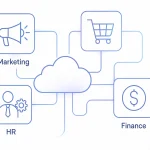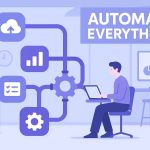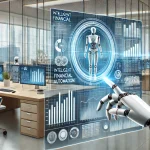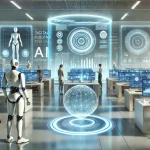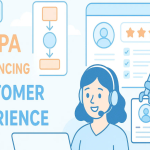How AI and RPA Are Shaping the Future of Hyper-Intelligent Workflows
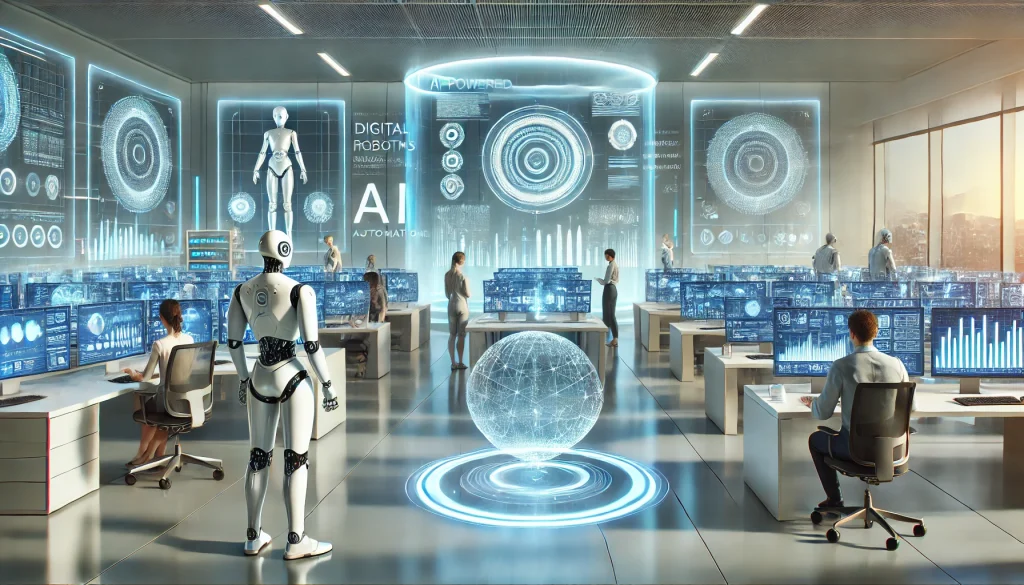
AI + RPA: The Future of Hyper-Intelligent Workflows
In the era of digital transformation, businesses are moving beyond traditional automation. The convergence of Artificial Intelligence (AI) and Robotic Process Automation (RPA) is creating a new wave of innovation — what experts now call hyper-intelligent workflows. These workflows don’t just automate repetitive tasks; they think, learn, and adapt in real time. This combination of AI + RPA is redefining how organizations operate, make decisions, and deliver customer value.
Understanding the Power Duo: AI and RPA
Robotic Process Automation (RPA) focuses on automating structured, rule-based tasks — like data entry, report generation, or invoice processing. On the other hand, AI brings intelligence to the mix. It enables systems to analyze data, recognize patterns, and make predictions. When combined, AI enhances RPA with decision-making capabilities, allowing automation to go far beyond scripts and rules.
Think of RPA as the hands of automation and AI as the brain. Together, they enable systems that not only execute tasks but also learn from context and outcomes. This integration allows businesses to automate complex, end-to-end processes that previously required human judgment.
What Are Hyper-Intelligent Workflows?
Hyper-intelligent workflows represent the next stage of automation maturity. They combine RPA, AI, machine learning, and advanced analytics into seamless, intelligent systems. These workflows can dynamically adapt to changes, handle exceptions automatically, and even predict future needs.
For example, an intelligent claims processing system in insurance can automatically read claim forms (using AI-based OCR), validate details, detect potential fraud, and trigger payout workflows — all without manual intervention. Similarly, in finance, hyper-intelligent workflows can reconcile accounts, forecast revenue, and send alerts about unusual patterns in transactions.
Key Benefits of Combining AI and RPA
1. Smarter Decision-Making
RPA can handle structured data efficiently, but AI allows automation to handle unstructured information like emails, PDFs, or voice data. This means the system can make informed decisions by interpreting context — just like a human analyst.
2. Greater Accuracy and Compliance
AI models can detect anomalies, validate inputs, and ensure compliance with regulatory standards. When integrated with RPA, this minimizes human error and maintains data integrity across workflows.
3. Real-Time Insights
By combining RPA’s speed with AI’s analytics, organizations gain real-time insights into process performance. This helps leaders identify bottlenecks and continuously improve operations.
4. Reduced Costs and Improved ROI
Automation significantly reduces manual workload, but AI-driven optimization ensures every workflow runs at peak efficiency. According to Gartner, companies using AI-enabled RPA report up to a 40% reduction in operational costs within the first year of deployment.
5. Enhanced Customer Experience
AI-powered bots can understand customer emotions, prioritize tickets, and respond intelligently. Combined with RPA’s speed, this results in faster resolutions and higher satisfaction levels.
Practical Use Cases of AI + RPA Integration
1. Financial Operations
AI-driven RPA bots can analyze transaction data, detect irregularities, and automatically generate compliance reports. For example, in accounts payable, an RPA bot can capture invoice data, while an AI model validates the vendor and payment accuracy.
2. Human Resources
Recruitment, onboarding, and payroll can all be streamlined with AI-RPA synergy. An AI module can screen resumes and recommend top candidates, while RPA automates interview scheduling and document collection.
3. Healthcare and Life Sciences
Hospitals are using AI and RPA to process patient data, predict readmissions, and automate administrative tasks. This allows healthcare staff to focus more on patient care and less on paperwork.
4. Customer Support
AI-powered chatbots integrated with RPA can instantly fetch customer data, initiate refund processes, or update CRM systems like Salesforce. This creates a seamless support experience without human involvement.
5. Supply Chain Management
AI helps predict demand trends, while RPA executes procurement and order management workflows automatically. This ensures optimal inventory levels and fewer delivery delays.
Real-World Example: From Automation to Intelligence
Consider a retail company that processes thousands of online orders daily. RPA bots can handle order entries, invoice creation, and shipment tracking. However, integrating AI enables predictive insights — identifying when a customer might churn or forecasting product demand based on historical data.
This fusion transforms simple automation into hyper-intelligent orchestration. The system learns from customer behavior, adjusts inventory dynamically, and even personalizes marketing messages — all in real time.
AI + RPA: The Foundation of Hyperautomation
When businesses adopt both AI and RPA at scale, they move toward what’s known as Hyperautomation — a term popularized by Gartner. Hyperautomation expands automation across the enterprise by integrating RPA, AI, process mining, analytics, and low-code tools into a single intelligent ecosystem.
Unlike traditional automation, hyperautomation doesn’t just automate tasks; it continuously evolves workflows using data feedback loops. The outcome? An enterprise that runs on intelligent, self-optimizing systems capable of scaling without additional workforce overhead.
Challenges in Implementing AI + RPA
Despite the promise, implementing AI and RPA together requires careful planning. Common challenges include:
- Data Quality Issues: Poor data can lead to inaccurate AI predictions and unreliable automation.
- Integration Complexity: Merging legacy systems with AI-driven tools can be technically demanding.
- Change Management: Employees may resist automation unless guided through structured training and adoption programs.
Partnering with an experienced automation provider like Deca Soft Solutions helps overcome these hurdles with the right mix of strategy, implementation, and support.
Best Practices for Building Hyper-Intelligent Workflows
- Start Small, Scale Fast: Begin with pilot workflows to demonstrate value, then expand across departments.
- Use Data Strategically: Feed AI models with clean, structured data to ensure accuracy.
- Integrate Seamlessly: Choose RPA platforms like UiPath or Power Automate that support AI connectors and APIs.
- Monitor and Optimize: Use dashboards and analytics to measure workflow performance and make continuous improvements.
- Focus on Human-AI Collaboration: Design systems where automation assists humans, not replaces them.
How Businesses Can Get Started
Building hyper-intelligent workflows doesn’t have to be overwhelming. Here’s a roadmap for success:
1. Identify Automation Opportunities
Start with repetitive processes that require manual data handling — such as invoice validation, report generation, or lead processing.
2. Choose the Right Tools
Leading platforms like UiPath, Microsoft Power Automate, and OpenBots offer native AI integrations and low-code development environments for building intelligent automations.
3. Combine Human and Digital Intelligence
Encourage teams to work alongside AI-driven bots. Humans handle exceptions and creative decisions, while bots manage structured, high-volume tasks.
4. Measure ROI Continuously
Track key performance indicators (KPIs) like process completion time, cost reduction, and accuracy improvements to assess impact. Learn more in our related blog — 5 Smart Ways to Measure ROI from RPA and AI Projects.
Future Outlook: Towards a Self-Optimizing Enterprise
The future of automation is not just digital — it’s intelligent. With AI + RPA at the core, enterprises will transition from static process automation to dynamic, adaptive systems. In the coming years, these technologies will enable self-healing workflows, predictive maintenance, and even autonomous decision-making at scale.
Organizations that embrace this evolution early will gain a competitive advantage, achieving faster innovation, cost efficiency, and better customer engagement. The journey toward hyper-intelligent workflows is no longer optional — it’s essential for staying ahead in the AI-driven economy.
Conclusion
AI and RPA together mark a transformative leap in how businesses operate. They enable smarter, faster, and more agile workflows that continuously learn and evolve. As companies embrace hyper-intelligent automation, they unlock new levels of efficiency, insight, and innovation.
At Deca Soft Solutions, we help organizations integrate AI and RPA to build future-ready automation ecosystems. Whether you’re exploring process automation or aiming for full-scale hyperautomation, our experts can design the right strategy tailored to your business goals. Connect with us today to start your journey toward intelligent automation.
